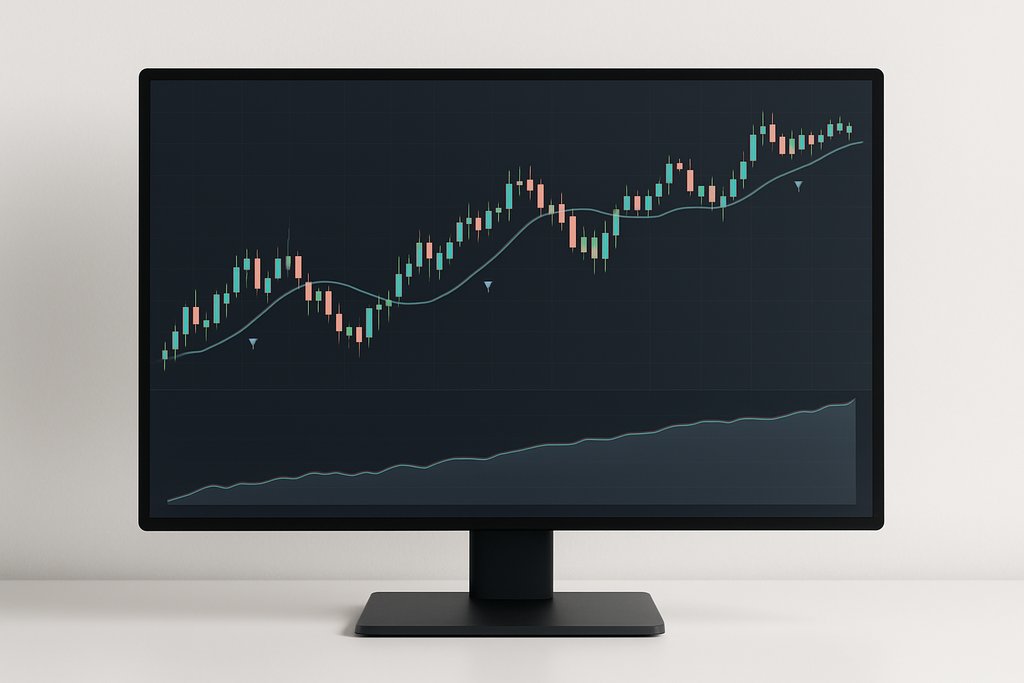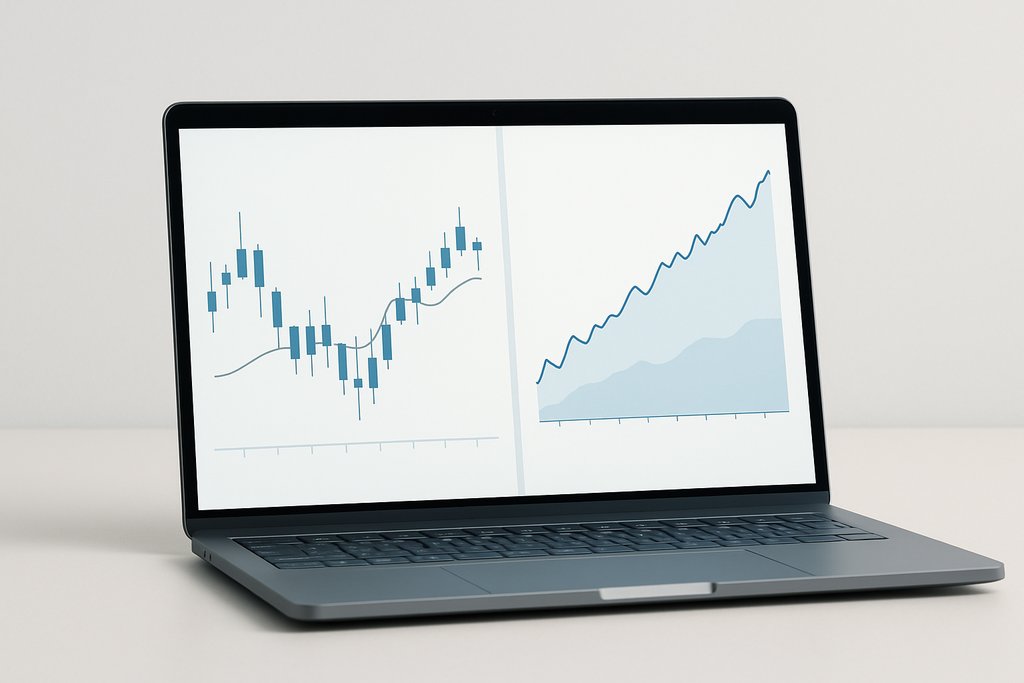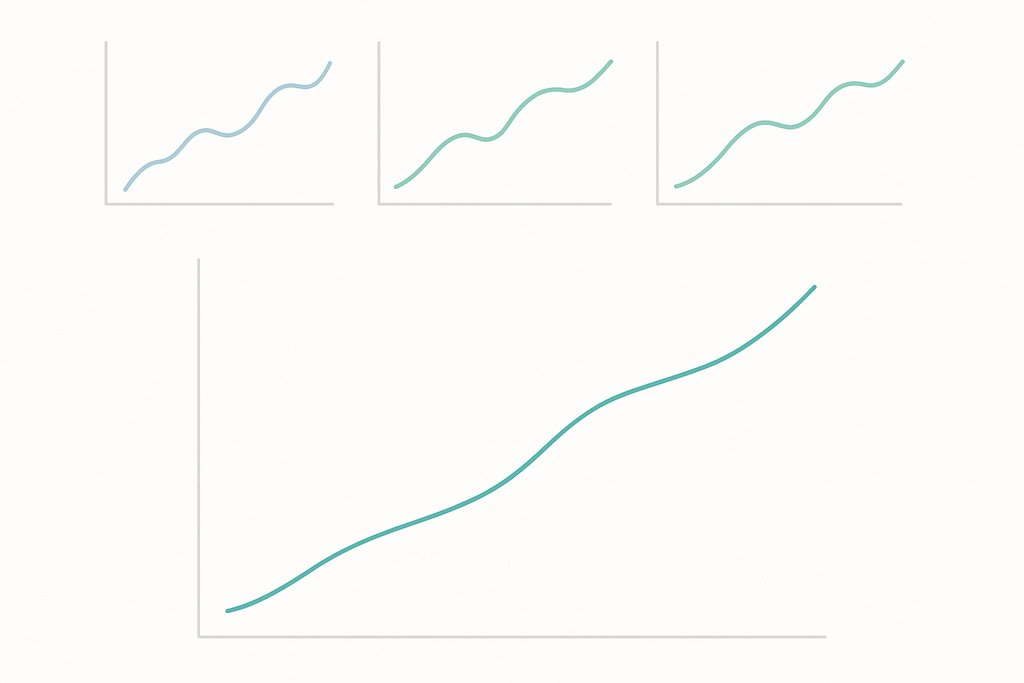Backtesting Software: How to Pick, Use, and Trust It
Discover how to choose backtesting software that matches your strategy, validate ideas with realistic assumptions, and move confidently from research to live trading.

Table of contents
- What is backtesting software?
- What makes the best backtesting software
- A closer look at modern backtesting workflows
- Backtesting in practice: examples and pitfalls
- Where Obside fits
- Step-by-step: run your first backtest
- Benefits and considerations
- Conclusion and next steps
- FAQs
- Related articles
What is backtesting software?
If you are searching for backtesting software, you are likely trying to answer a simple question: will your trading idea work before you risk real money. Backtesting is the bridge between inspiration and implementation. Without it, your strategy is guesswork. With it, you validate assumptions, measure risk, and build the confidence to execute with discipline.
Backtesting software simulates a trading strategy on historical data to estimate how it might have performed. Given a defined set of rules, it shows when the system would have bought or sold and the outcomes after transaction costs and realistic execution.
Quality tools do more than draw equity curves. They ingest high quality market data, process entry and exit logic, model fills with slippage and spreads, handle portfolio rules and risk controls, and return trader-grade statistics. Expect metrics like return, volatility, drawdowns, Sharpe and Sortino, hit rate, profit factor, exposure, and time in market. Expect visibility into trades, positions, and distribution of returns across instruments and regimes.
Software comes in different flavors. Some are code-first frameworks for quants. Others are no-code platforms where you assemble rules or even describe them in plain language. The right choice depends on your skills, the complexity of your strategy, and how quickly you need to transition from research to live execution. For definitions and a primer on performance metrics, see Investopedia’s guide to backtesting.

What makes the best backtesting software for you
There is no single best tool for every trader. Aim for strong fit between your strategy and the platform’s capabilities. These criteria help you evaluate options with clarity.
Data quality and coverage
Your results are only as good as your data. For equities, look for survivorship bias control, corporate actions, and delistings. For crypto and FX, ensure tick quality or robust intraday bars with realistic spreads. Good tools document sources and handling. Learn about survivorship bias and look-ahead bias so you can avoid them.
Execution realism
Assuming you always get the close without slippage produces fantasy. Look for fill models that account for spreads, latency, order types, partial fills, and position sizing rules. If you trade intraday and care about microstructure, event-driven simulators with tick or second-level bars are essential.
Speed and scalability
You will iterate often. Fast engines let you test variations in seconds instead of hours. This matters even more for parameter sweeps, walk-forward analysis, or Monte Carlo resampling to probe robustness.
Flexibility and expressiveness
Research should not be constrained by the tool. You should be able to combine price action with indicators, fundamentals, events, and alternative data. Multi-asset portfolios, hedging, and conditional logic should be easy to express. Learn more about indicator design in our guide to the RSI indicator.
From research to live trading
The best software shortens the path from idea to execution. Strategy logic should flow into alerts, paper trading, and automated orders without a rebuild. Broker and exchange integrations matter here. See how to move from signals to actions in Trading Automation.
Transparency and diagnostics
Robust reporting helps you understand why a strategy works. Inspect trade lists, heatmaps, drawdown periods, regime behavior, and parameter sensitivity. Tools that provide these insights help you avoid overfitting.
Ease of use
If you are not a programmer, no-code or low-code interfaces matter. If you are, SDKs and APIs matter. Either way, the fastest workflow is the one you will use consistently.
Cost and ecosystem
Consider pricing, limits on data or compute, and the community around the tool. A vibrant ecosystem means more examples, templates, and faster troubleshooting. If portfolios are your focus, explore our guide to Backtest Portfolio.
A closer look at modern backtesting workflows
Professionals follow a process that reduces bias and focuses on out-of-sample reliability. Adapt this high-level workflow to your context.
Start with a falsifiable idea
Define a simple hypothesis that can be wrong. Example: when RSI on a 2-hour chart rises above 50 and Supertrend on both 2-hour and 8-hour charts is bullish, buying has positive expectancy after fees.
Define your universe and timeframe
Be explicit about assets, timeframes, and date ranges. Use a training period for development and a separate period for validation.
Codify rules and risk controls
List entry and exit conditions, stop-loss and take-profit logic, position sizing, and portfolio constraints. Keep it simple first.
Run the initial backtest
Use realistic assumptions for slippage, commissions, and latency. Record baseline performance and identify failure modes.
Validate out of sample
Freeze your rules, then test on unseen data. The goal is to measure generalization rather than maximize backtest equity.
Probe robustness
Perform walk-forward tests and parameter sweeps. Use techniques like Monte Carlo to simulate alternate trade sequences and gap risks.
Paper trade before going live
Simulate in real time with current data and the same order logic. This catches operational issues that static backtests miss.
Automate and monitor
Once live, monitor slippage, execution quality, and regime shifts. Feed learnings back into research without chasing every short-term deviation.

Backtesting software in practice: examples and pitfalls
Let’s move from theory to the screens and examine where realism and diagnostics make the difference.
Technical momentum example
Suppose you buy when a 50-period moving average crosses above a 200-period moving average on a 1-hour chart, with RSI below 70 to avoid late entries. You set a stop at 2 ATR and a target at 3 ATR. Quality software reports more than total return. It should show average trade duration, equity curve over time, worst intra-trade drawdown, sensitivity to ATR multipliers, and behavior during high versus calm volatility regimes.
Event-driven example
Imagine buying oil when a hurricane is announced that threatens Gulf production, then holding for three days unless WTI spikes beyond a threshold. Your tool must ingest event data and align it with market timestamps. Realistic fill modeling is critical since news widens spreads and moves markets quickly. Close-to-close fills would inflate results.
Portfolio rebalancing example
You maintain a 50 percent allocation to Bitcoin, 25 percent to Ethereum, and 25 percent to USDC, rebalanced weekly with drift bands. A proper portfolio simulator accounts for trading costs, rebalancing thresholds, and tax lots if applicable. It should report portfolio drawdowns and correlation impacts, not just per-asset returns.
Common pitfalls to catch
Most bad backtests fall into a few traps. Data snooping arises when you tweak parameters repeatedly on the same data until results look great, then the system fails live. Inconsistent time alignment leads to look-ahead bias. Unrealistic fills ignore liquidity and slippage. Survivorship bias hides delisted losers. Over-optimization creates fragile strategies that worked only under specific historical conditions.
Where Obside fits: from idea to backtest to live execution
If your goal is to move from idea to action quickly, Obside is a strong contender. It is a financial automation platform where you describe in plain language what you want to do and the system converts that into alerts, backtests, and live orders. For example: when the Supertrend becomes bullish on the 2-hour chart and RSI is not overbought, buy, place a trailing stop at 5 ATR, and close if Supertrend flips. Obside’s ultra-fast engine validates this in seconds, then runs it automatically with connected brokers and exchanges.
What sets it apart is the combination of speed, data breadth, and event-driven logic. You can test reactions to prices, indicators, news, or macro data. For example, backtest: buy $50 of Bitcoin every Monday at 10:00; alert when RSI crosses 70 on EUR/USD and MACD turns bearish; or sell all positions if the S&P 500 drops 10 percent. The same rules can be turned into live automation without reimplementation. Explore how it bridges research and execution in our guide to Algorithmic Trading.
Alert me if Bitcoin rises above $150,000 and daily volume doubles. Buy $50 of Tesla if Elon Musk tweets about it. Keep 50 percent BTC, 25 percent ETH, 25 percent USDC, rebalanced weekly.
Step-by-step: run your first robust backtest in 30 minutes
Here is a compact plan you can follow in any capable tool, including Obside.
- Frame the hypothesis. Example: on a 15-minute chart, when a bullish RSI divergence appears, enter long, set a stop at the day’s low, and a 10 percent take-profit. Define instruments such as BTCUSD and ETHUSD.
- Set realistic costs. Input expected spreads, commissions, and slippage based on recent conditions and your venue.
- Build the logic. Implement entries and exits, plus a safety rule that closes the position if volatility triples relative to the last 20 bars.
- Choose periods. Use two-thirds of the data for development and one-third for validation. Do not touch rules during validation.
- Run baseline backtests. Record CAGR, max drawdown, Sharpe, profit factor, average trade, and win rate. Save the trade list.
- Perform sensitivity checks. Vary stop and target ratios and RSI period. Seek a plateau of acceptable results, not a razor-thin peak.
- Walk-forward. Split data into chronological folds, optimize on each train fold, evaluate on the next test fold, then aggregate.
- Stress test. Apply Monte Carlo resampling of trade sequences. Review worst-case drawdowns and ensure they are tolerable.
- Paper trade for two weeks. Run with live data and paper orders. Compare slippage and fill rates to your assumptions.
- Deploy small. Start with reduced size. Monitor weekly. Adjust only if you find a structural issue.
Benefits of backtesting software and important considerations
The primary benefit is objectivity. Backtesting forces you to write rules and test them systematically, reducing hindsight bias and cherry-picking. Speed is the second benefit. You can explore ideas rapidly that would take weeks by hand. The third benefit is risk awareness through metrics like maximum drawdown, tail risk, and exposure that inform sizing and allocation.
- Validate ideas before risking capital
- Iterate faster with clear feedback
- Understand risk and drawdowns
There are considerations. Backtests are models, not reality. Markets change, liquidity vanishes, and correlations jump. Overfitting is a constant risk, especially with many parameters and weak validation. Costs act like gravity on short-term systems. Be honest about operational capability. If your edge needs sub-second execution and you cannot achieve that live, the result is not actionable.
Backtests are proof that your idea survived contact with the past under defined conditions, not a guarantee of the future.
Conclusion: your next steps with backtesting software
If you have a strategy idea, do not send it to market blind. Choose backtesting software that matches your needs, test with realistic assumptions, and validate out of sample. If you want the shortest path from idea to action, try a platform that unifies backtesting, alerts, and execution so you spend more time on edges and less on plumbing. Obside gives you that flow: chat your rules, run an ultra-fast backtest, then automate with your broker or exchange when you are ready.
Actionable next step: write down one simple rule you believe in, specify the instrument and timeframe, then run your first backtest today. Aim for clarity and robustness over perfection on a single run.
FAQs: backtesting software
What is the most accurate backtesting software?
Accuracy depends on your strategy and the assumptions you feed the tool. For intraday or event-driven systems, accuracy requires high quality intraday data, realistic slippage models, and event alignment. For swing or portfolio strategies, accurate corporate action handling and portfolio simulation matter more. The best choice mirrors your live conditions most closely.
How much historical data do I need to backtest?
A practical guideline is to cover multiple market regimes. For daily strategies, five to ten years often capture bull, bear, and sideways periods. For intraday strategies, prioritize depth of intraday data across high and low volatility seasons rather than calendar length. Always keep a portion strictly out of sample.
Can I backtest strategies based on news or macro events?
Yes, provided your software ingests timestamped event data and aligns it with price series. Execution modeling is critical because spreads widen and slippage increases during news. Event-driven backtesting is an area where integrated platforms that combine data, logic, and execution have an advantage.
What is the difference between in-sample and out-of-sample testing?
In-sample data is used to build and tune your strategy. Out-of-sample is kept separate until you validate. Strong strategies deliver acceptable out-of-sample performance without parameter tweaking. Walk-forward testing is a disciplined way to alternate between development and validation across time.
Is no-code backtesting good enough for serious trading?
It can be. The key is not whether you write code but whether the tool lets you express logic clearly, model execution realistically, and move to live trading without a rewrite. Choose the path that keeps you rigorous and fast.
Who offers the best backtesting software for beginners?
Look for guided workflows, clean reporting, and an easy way to go from backtest to paper trading. Platforms that let you describe rules in plain language and then automate them can be ideal. As you grow, ensure the tool supports advanced features like portfolio simulation and event-driven logic.
